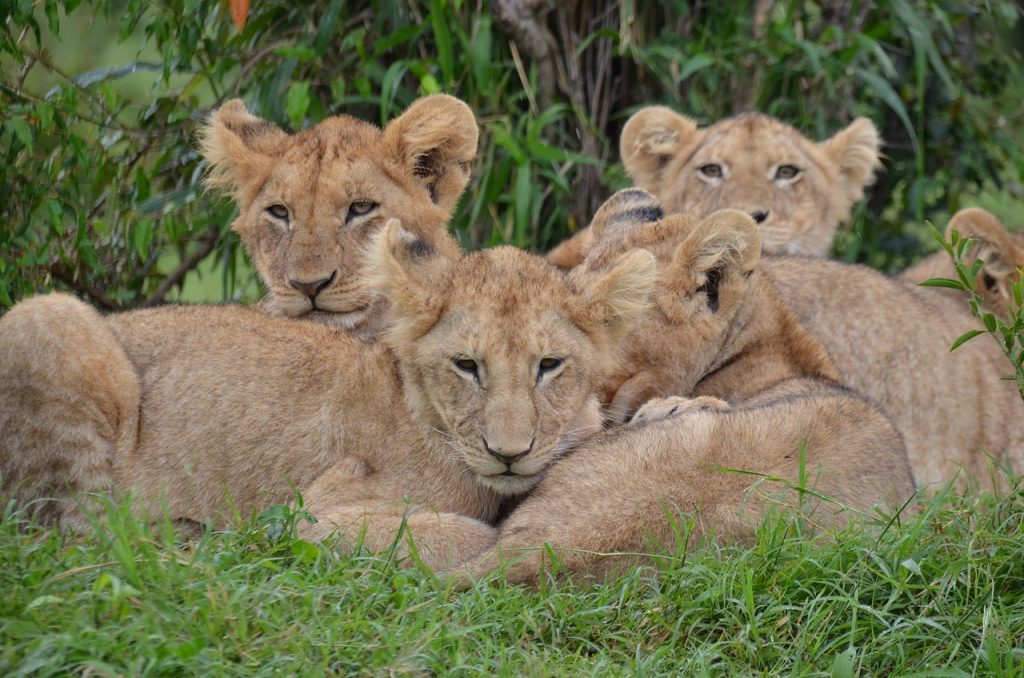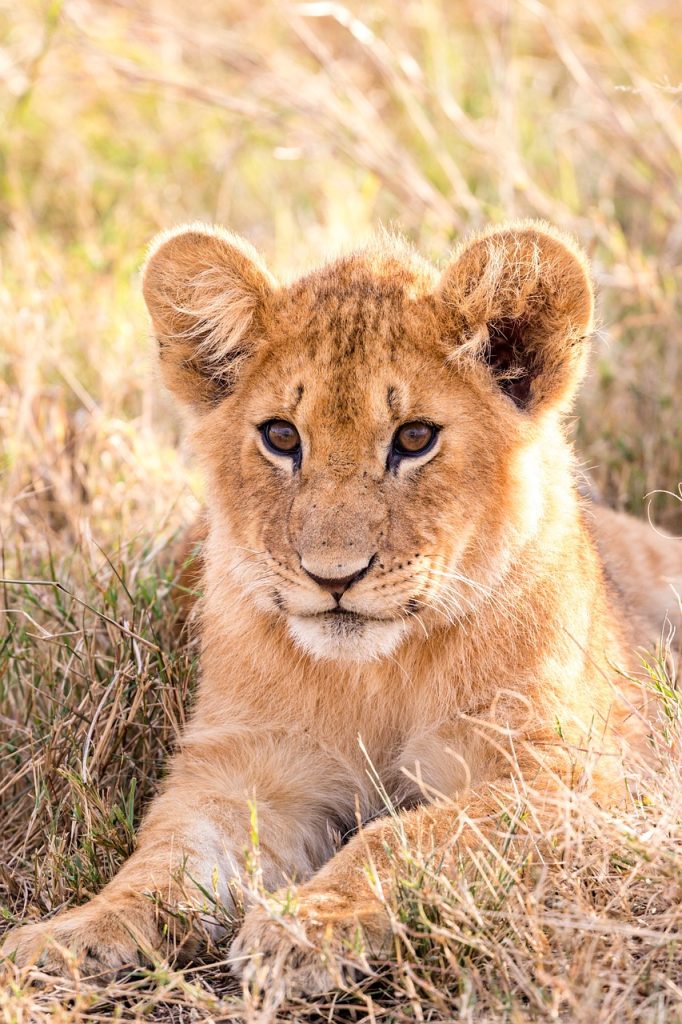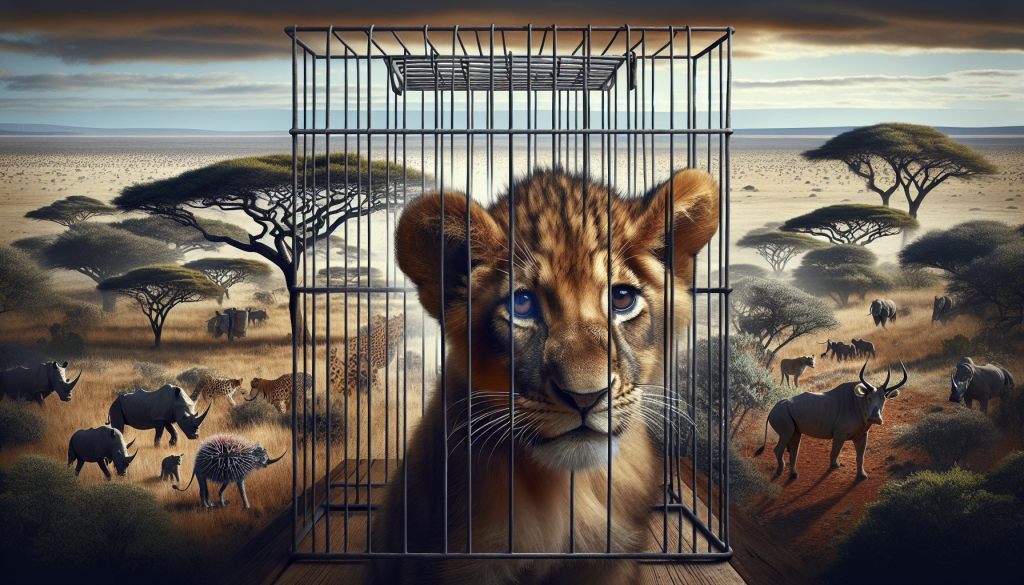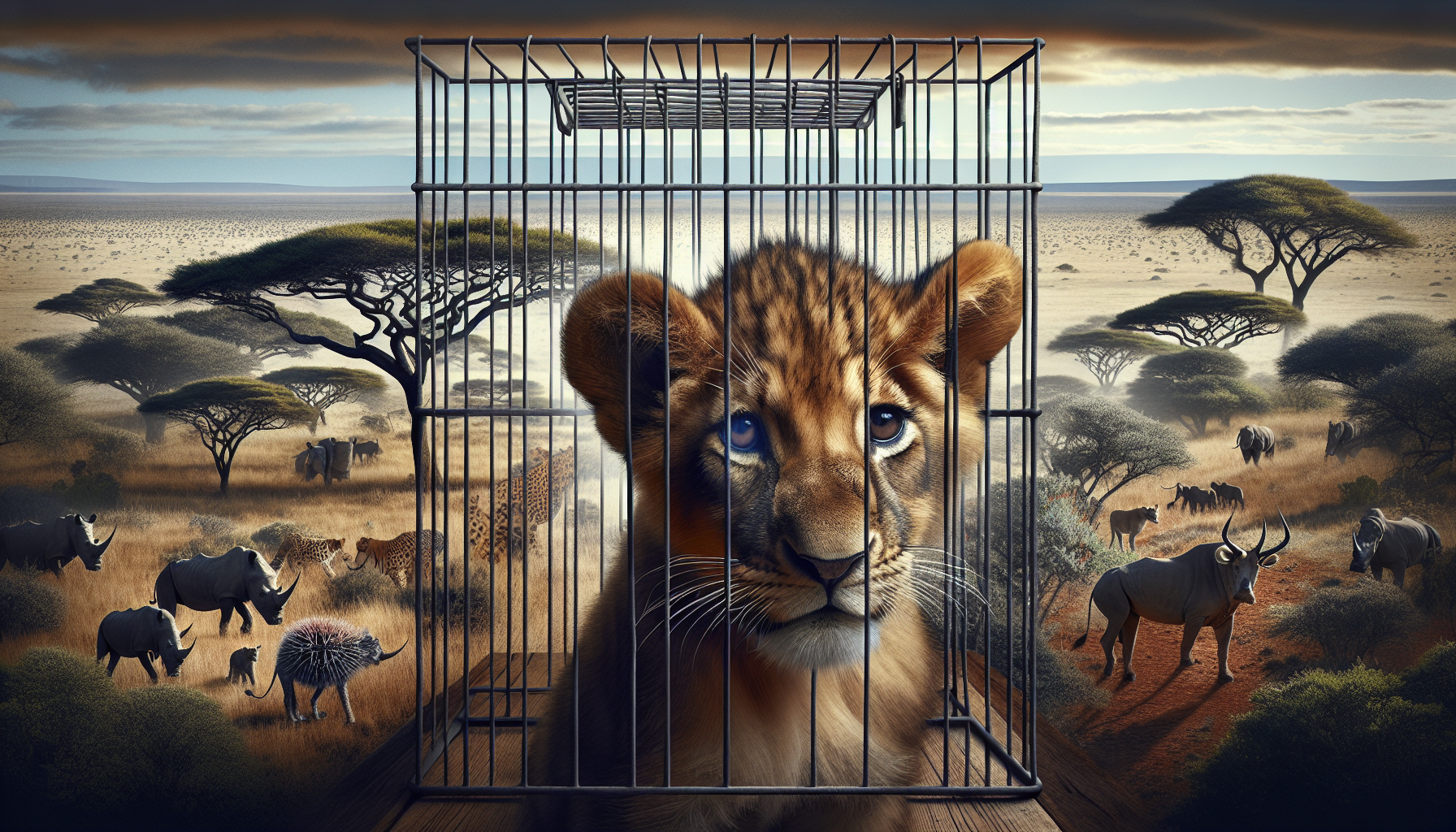Picture this: you find yourself on a once-in-a-lifetime safari adventure in Africa, observing majestic lion prides in their natural habitat. Suddenly, you stumble upon a vulnerable lion cub, abandoned by its mother for reasons unknown. Your heart aches at the sight, and you can’t help but wonder: what are the ethical considerations involved in rescuing and conserving these lion cubs? In this article, we will explore the delicate balance between intervention and preservation when it comes to rescuing lion cubs, and shed light on the ethical choices faced by conservation organizations.

The Importance of Rescuing Lion Cubs
Rescuing lion cubs plays a crucial role in preserving the genetic diversity of lion populations. Lions, like many other species, face the threat of habitat loss and declining numbers due to human activities. By rescuing lion cubs, we can help ensure that the unique and valuable genetic traits of these magnificent animals are not lost forever. Genetic diversity is essential for the long-term survival of any species, as it allows for adaptation to changing environments and increased resilience to diseases.
Additionally, rescuing lion cubs helps prevent inbreeding and genetic disorders within lion populations. In small and isolated populations, inbreeding becomes a significant concern that can lead to a decrease in overall fitness and an increased risk of genetic disorders. By rescuing and reintroducing unrelated lion cubs into these populations, we can help combat inbreeding and maintain healthy genetic variations.
Another important aspect is the contribution to ecosystem balance. Lions are top predators and play a vital role in maintaining the ecological balance of their habitats. By rescuing and rehabilitating lion cubs, we can help restore their population numbers and ensure that they can resume their natural role in regulating prey populations and maintaining the health of their ecosystems.
Furthermore, rescuing lion cubs contributes to the conservation of threatened and endangered species. Lions are listed as a vulnerable species, and their populations continue to decline. By rescuing lion cubs, we can actively participate in conservation efforts and work towards preventing the extinction of this iconic species. Every lion cub rescued and successfully reintroduced into the wild is a step towards ensuring the long-term survival of lions and their ecosystems.
Ethical Dilemmas in Lion Cub Rescue
While rescuing lion cubs is undoubtedly important for conservation efforts, it is crucial to consider the ethical dilemmas that surround this practice. One major concern is the potential negative impact on wild lion populations. If the rescuing and rehabilitation of lion cubs become too extensive, it could disrupt the natural processes and dynamics of wild lion populations. Careful consideration must be given to the number of cubs rescued and reintroduced to avoid overwhelming existing populations or creating imbalances.
Additionally, the rescue and rehabilitation of lion cubs can also lead to the disruption of natural social structures within lion prides. Lions have complex social hierarchies and relationships, and introducing rehabilitated cubs into established prides can cause conflicts and disturbances. It is essential to carefully assess the compatibility of rescued cubs with existing social groups to minimize potential harm and ensure a smooth integration.
Another ethical issue to consider is human imprinting and dependencies. When lion cubs are raised by humans during the rescue and rehabilitation process, they can develop a strong bond with their caregivers. This bonding can lead to dependency and an inability to live and function independently in the wild. The goal of any rescue and rehabilitation program should be to foster the cubs’ independence and minimize their dependence on human interaction.
Legal and regulatory considerations also come into play when rescuing lion cubs. It is essential to work within the framework of local laws and regulations to ensure that all rescue efforts are conducted legally and ethically. This includes obtaining proper permits, adhering to wildlife protection laws, and working closely with wildlife authorities to ensure the best interests of the cubs and their long-term conservation.
Balancing Conservation Goals and Animal Welfare
To successfully balance conservation goals and animal welfare in lion cub rescue, it is crucial to implement responsible rescue practices. This includes prioritizing the welfare and well-being of the cubs throughout the entire rescue and rehabilitation process. Adequate care and rehabilitation facilities must be provided to ensure the cubs’ physical and emotional health, as well as their successful transition into the wild.
Promoting genetic management and species survival is another critical aspect. When rescuing lion cubs, it is essential to consider their genetic contribution to the wild populations. Genetic assessments should be conducted to determine the cubs’ suitability for reintroduction and ensure that their genes contribute positively to the overall genetic diversity of the populations. This genetic management approach helps maximize the long-term survival and adaptability of lion populations.
Minimizing human-animal interactions is also crucial to the successful balance between conservation goals and animal welfare. While human intervention is necessary during the rescue and rehabilitation process, efforts should be made to limit physical contact and interactions as much as possible. The ultimate goal is to prepare the cubs for life in the wild, where they will interact primarily with their own kind and rely on their natural instincts and behaviors.
Considerations for Release into the Wild
Releasing rescued lion cubs into the wild comes with its own set of challenges and considerations. One of the primary concerns is ensuring that the cubs have sufficient survival skills before their release. They must be taught and exposed to essential hunting and survival behaviors through carefully planned training and acclimatization programs. These programs help the cubs develop the necessary skills to find food, establish territories, and navigate their natural habitats successfully.
Post-release monitoring is crucial to assess the success of reintroduction efforts and the cubs’ ability to adapt to their new environment. Tracking their movements, interactions, and overall well-being provides valuable insights into the effectiveness of lion cub rescue and rehabilitation programs. This data can further inform future conservation strategies and improve reintroduction techniques.
Additionally, the long-term viability of released lions must be considered. Monitoring the survival and reproductive success of released individuals is essential to ensure the continued growth and stability of reintroduced populations. Robust monitoring efforts can help identify any challenges or threats that reintroduced lions face and allow for timely interventions or adjustments in conservation strategies.

Alternatives to Rescue and Rehabilitation
While rescuing and rehabilitating lion cubs is a vital conservation strategy, there are alternative approaches that can complement these efforts. Supporting in situ conservation efforts focuses on protecting lions and their habitats in the wild. This involves measures such as habitat restoration, anti-poaching initiatives, and community engagement to promote coexistence with lions and reduce human-wildlife conflicts.
Conservation education and public awareness play a crucial role in raising awareness about the importance of lion conservation and the ethical implications of cub petting and volunteering. By educating the public about responsible tourism practices and the negative consequences of activities that exploit lion cubs, we can help reduce demand for these practices and promote a more ethical approach to wildlife conservation.
Empowering local communities is another alternative to lion cub rescue. By involving and empowering local communities in conservation efforts, we can create a sense of ownership and a vested interest in protecting lions and their habitats. This can be achieved through initiatives that support sustainable livelihoods, promote indigenous knowledge and practices, and encourage conservation-oriented entrepreneurship.
Collaboration with wildlife authorities is essential in addressing the challenges and complexities of lion conservation. Working in partnership with governmental and non-governmental organizations, as well as local communities, allows for a more comprehensive and effective approach to conservation. By combining resources, expertise, and efforts, we can maximize the impact of conservation initiatives and ensure the long-term survival of lions.
Impacts of Captive Lion Breeding on Conservation
While captive lion breeding may seem like a potential solution to the decline of wild lion populations, it comes with significant negative ramifications. Cub petting and volunteering, which are often associated with captive lion breeding facilities, can perpetuate a cycle of exploitation and contribute to the demand for these unethical practices. By participating in cub petting or volunteering, visitors unknowingly support an industry that prioritizes profit over conservation and animal welfare.
Captive breeding also has the potential to fuel illegal wildlife trade. The demand for lion bones, trophies, and other lion parts drives the poaching and trafficking of lions both within and across borders. Captive lion breeding facilities can become a front for illegal activities, providing an ongoing supply of lions and lion products to the black market. This further threatens wild lion populations and hinders conservation efforts.
Controversies surrounding canned hunting further highlight the ethical concerns associated with captive lion breeding. Canned hunting involves the killing of lions in confined spaces, where they have no chance of escape. This practice, widely regarded as unethical and devoid of fair chase principles, tarnishes the reputation of lion conservation efforts and undermines the conservation goals it claims to support.
Responsible captive breeding programs play a different role in conservation. These programs prioritize the welfare and genetic diversity of the lions, with the intention of reintroduction into the wild or providing suitable long-term care for individuals that cannot be released. By following strict ethical guidelines and conservation principles, responsible captive breeding programs can contribute positively to the conservation of lions and their habitats.

Evaluating the Effectiveness of Lion Cub Rescue
Evaluating the effectiveness of lion cub rescue is essential to ensure that conservation efforts are making a lasting impact. Monitoring survival and reproduction rates of reintroduced lions provides valuable information on the success of rescue and rehabilitation programs. By tracking the long-term survival and reproductive success of these individuals, we can assess the effectiveness of the programs and identify areas for improvement.
Assessing the genetic contribution of reintroduced lions to wild populations is another crucial aspect of evaluating the effectiveness of lion cub rescue. Genetic studies can help determine if the introduced genetic diversity is being maintained and integrated into the existing populations. Comparing genetic markers between the captive-bred cubs and the wild lion populations provides valuable insights into their overall impact on genetic diversity.
Measuring the conservation impact at an ecosystem level is also crucial in evaluating the effectiveness of lion cub rescue. By assessing changes in prey populations, habitat health, and overall ecosystem dynamics, we can determine if the reintroduction of lions has positive cascading effects on the entire ecosystem. An ecosystem-level approach ensures that conservation efforts are not solely focused on single species but consider the broader ecological context.
Tracking global trends in lion conservation provides perspective on the wider conservation landscape and helps identify areas where further action is needed. By monitoring demographic trends, habitat loss, and poaching rates across different regions, we can gain a comprehensive understanding of the challenges and successes in lion conservation and adjust conservation strategies accordingly.
Best Practices and Standards in Lion Cub Rescue
Establishing accreditation and certification programs for lion cub rescue organizations helps ensure consistent standards and best practices. These programs can provide guidelines and criteria for rescue and rehabilitation facilities, ensuring that they meet specific criteria related to animal welfare, conservation objectives, and ethical considerations. Accreditation and certification also help build public trust and confidence in these organizations, as they operate under recognized standards that prioritize the well-being and long-term survival of the lions.
Consistency in animal welfare and ethical guidelines is crucial to maintaining high standards in lion cub rescue. Clear guidelines should be developed and followed regarding housing conditions, nutrition, medical care, and socialization during the rehabilitation process. Ethical considerations, such as minimizing human-animal interactions and prioritizing the cubs’ independence, should also be an integral part of these guidelines.
Transparency in financial and operational practices further enhances the credibility of lion cub rescue organizations. Being transparent about funding sources, expenditures, and governance structures helps ensure that resources are used efficiently and effectively for the benefit of the rescued cubs and their long-term conservation. Regular reporting and audits can provide assurance to donors and the public that their support is being allocated appropriately.
Collaborative efforts among conservation organizations are essential in lion cub rescue. By working together, organizations can share resources, expertise, and best practices to maximize the impact and effectiveness of their rescue and rehabilitation efforts. Collaboration also allows for the exchange of knowledge and lessons learned, leading to continuous improvement and innovation in lion conservation strategies.

Engaging Local Communities in Conservation Efforts
Engaging local communities in lion conservation efforts is vital for long-term success. Community-based conservation initiatives that involve local stakeholders can foster a sense of ownership, pride, and responsibility in protecting lions and their habitats. By involving communities in decision-making processes and providing them with opportunities to participate in conservation activities, a sustainable and inclusive approach to lion conservation can be achieved.
Mitigating human-wildlife conflict is a crucial aspect of engaging local communities in conservation efforts. Lions often come into conflict with local communities, especially those living adjacent to protected areas. By implementing strategies such as predator-proof fencing, community-led anti-poaching initiatives, and compensation programs for livestock losses, the negative impacts of human-wildlife conflict can be minimized. These efforts create a conducive environment for coexistence between lions and local communities.
Empowering indigenous knowledge and practices adds cultural value and wisdom to lion conservation efforts. Indigenous communities often have a deep understanding of local ecosystems and traditional conservation practices that have been passed down through generations. By recognizing and respecting their knowledge and involving them in decision-making processes, we can create a holistic approach to lion conservation that integrates cultural heritage and promotes sustainable practices.
Sustainable livelihoods for local communities are important to ensure their long-term support for lion conservation. By creating alternative income-generating opportunities that are compatible with conservation objectives, we can reduce the economic pressures that drive unsustainable practices such as poaching or habitat destruction. Supporting initiatives such as eco-tourism, sustainable agriculture, and small-scale enterprises helps generate income for local communities while contributing to the overall conservation goals.
Educating the Public about Ethical Conservation
Promoting responsible tourism and travel practices is vital in educating the public about ethical conservation. By raising awareness about the impacts of activities such as cub petting, lion walks, and canned hunting, tourists can make informed choices and opt for wildlife-friendly experiences. By supporting tour operators and accommodations that prioritize conservation ethics and animal welfare, tourists can actively contribute to the protection of lions and their habitats.
Raising awareness about the dark side of cub petting is crucial in dispelling the misconceptions and romanticized views that often surround these activities. Public education campaigns can highlight the negative consequences of cub petting, such as the perpetuation of the captive lion breeding industry and the exploitation of lion cubs for profit. By offering alternative ways to interact with wildlife, such as responsible wildlife viewing or volunteering at reputable conservation organizations, we can redirect public support towards more ethical conservation practices.
Encouraging support for ethical conservation organizations is another important aspect of public education. By promoting awareness of organizations that adhere to high ethical standards and prioritize the long-term welfare and survival of lions, the public can make informed decisions about where to direct their support. This includes donating to reputable organizations, volunteering in conservation initiatives, or engaging in advocacy efforts to strengthen wildlife protection laws.
Advocacy for stronger wildlife protection laws is crucial in ensuring that lions and other wildlife receive the legal protection they need. Public pressure and support can drive legislative changes and strengthen regulations surrounding captive lion breeding, cub petting, and other exploitative practices. By actively engaging in advocacy campaigns and supporting organizations that work towards better legal protection, individuals can contribute to creating a stricter legal framework for wildlife conservation.
In conclusion, rescuing lion cubs is of utmost importance in preserving genetic diversity, preventing inbreeding, contributing to ecosystem balance, and rescuing threatened species. However, ethical considerations must be acknowledged and addressed to avoid negative impacts on wild populations, disruptions of social structures, and excessive human imprinting. Balancing conservation goals and animal welfare requires responsible rescue practices, adequate care, and genetic management. Releasing cubs into the wild necessitates appropriate training, monitoring, and long-term viability assessment. Alternatives to rescue, such as supporting in situ conservation efforts and empowering local communities, should be taken into account. The negative impacts of captive lion breeding, including cub petting and canned hunting, must be recognized and countered through responsible captive breeding programs. Evaluating the effectiveness of lion cub rescue is crucial, as well as establishing best practices and engaging local communities in conservation efforts. Educating the public about ethical conservation practices, promoting responsible tourism, and advocating for stronger wildlife protection laws are essential for long-term conservation success. By implementing these measures, we can ensure that lion cub rescue is conducted with utmost care and consideration for both the lions themselves and the ecosystems they inhabit.


